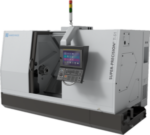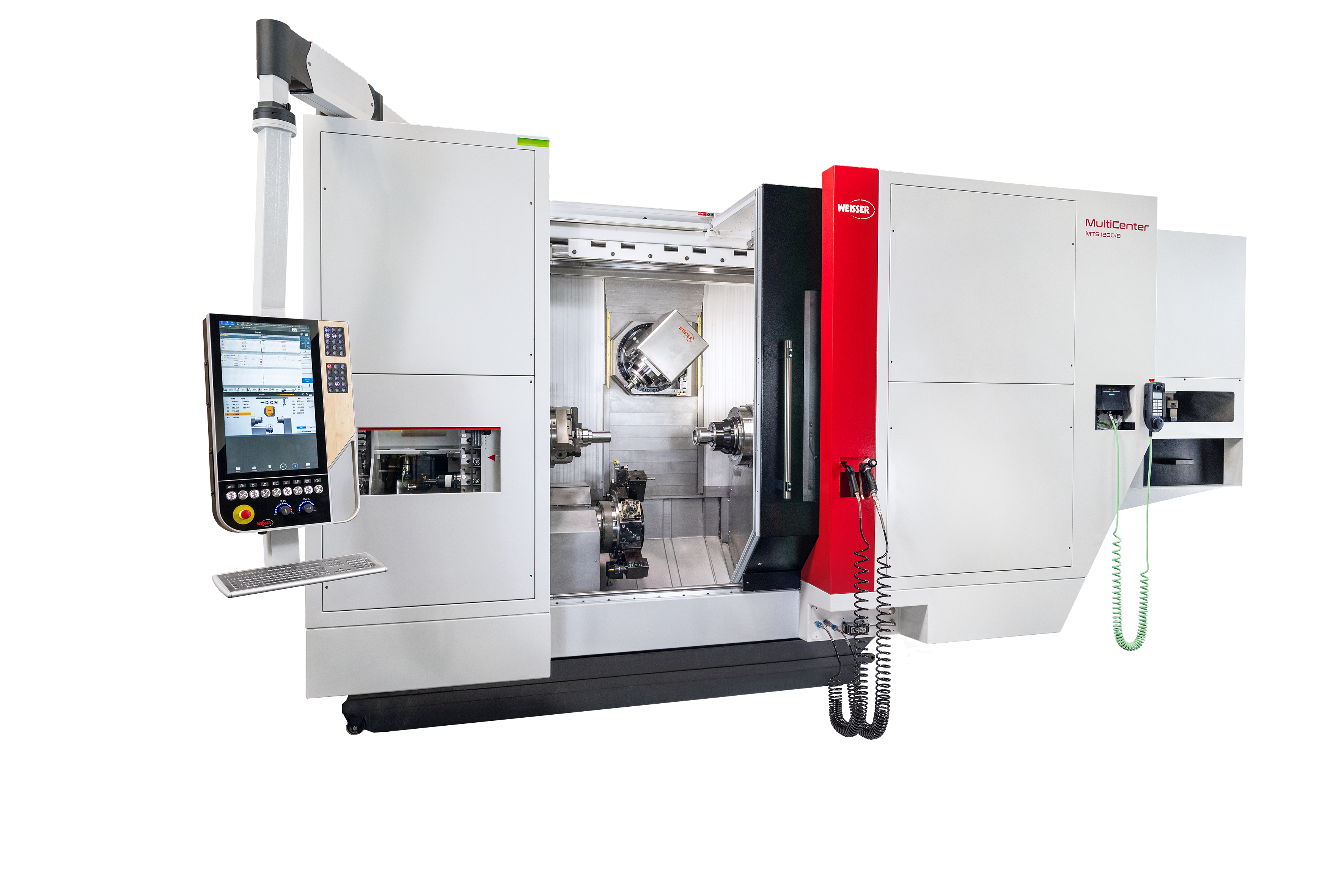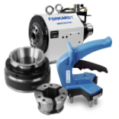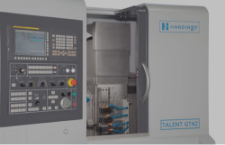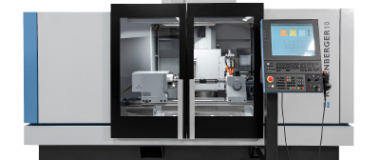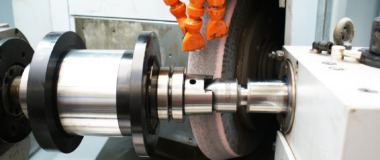To migrate from prototyping and one-off work to higher-volume jobs, Elmira, New York-based IDM needed more capability than its manual machines and older CNCs could provide. With the ability to complete parts in one setup and perform work that previously required multiple machines, the Hardinge SR-MSY multi-axis turning center was key to the shop’s competitiveness.

IDM manufactures automotive tire molds like this one on the Bridgeport VMC. Worn molds are re-machined to keep them in top condition.
IDM is an Elmira, New York-based manufacturer specializing in rapid turnaround of precision turned, milled and injection-molded parts. However, the company hasn’t always offered production machining—it made its start in prototyping and one-off job shop work. Transitioning to larger, more precise projects required significant equipment upgrades, and one of the shop’s first investments was a multi-axis SR-MSY turning center from Hardinge. By providing the capability to machine parts in one setup, this machine was instrumental in the company’s ability to competitively bid on higher-volume jobs.
IDM, an acronym for “I do machining,” machined its first prototypes and one-off jobs in 1993. The equipment on the floor at the time, which included several manual machines and what would today be considered old CNCs, reflected that focus. Now, the shop’s 3-year-old, 10,000-square-foot manufacturing facility houses high-performance VMCs and turning centers as well as EDM and plastic injection molding equipment. The company’s 15 machinists work to supply precision-machined parts to the medical, aerospace, industrial and automotive industries.
While building its customer base over the years, IDM acquired a number of other companies, including a foam fabricator and a manufacturer of construction industry hand tools. In early 2008, the company acquired Sepac, another local manufacturer specializing in custom-engineered brake and clutch motion-control systems. With this acquisition, the company grew even more with work from its own business, facilitating its migration to more production-oriented work.
However, the company realized that without new equipment, lengthy setups and extensive part-handling would likely cause it to lose jobs to other bidders. To expand its capabilities while maintaining prototype work, the shop canvassed its customers to determine their needs and which types of machines would be required to fulfill those needs. First on the list was a turning center that could perform multiple operations in a single setup, and the Hardinge SR-MSY delivered. The machine is equipped with a VDI top plate with live tooling, a C axis, a Y axis and a subspindle. “Having so many capabilities in one platform, especially the Y axis, opened up a lot of avenues for us,” says John Meier, owner of IDM.
Outfitting the machine with a bar feeder from LNS America further increased its “done-in-one” capability, allowing the shop to win jobs that otherwise would have been lost. One such job is an aftermarket motorcycle component that is machined from 6061 aluminum barstock before undergoing hand polishing and chrome plating operations. The threads change from one component to the next depending on the make of the motorcycle. In a typical run, the shop cuts approximately 100 pieces, each with a cycle time of 12 minutes. With its subspindle and Y axis, the SR machine has allowed the company to move the job from two machines to one, says Bob Briggs, IDM production manager.
“Was it absolutely necessary to use the Y axis on this part? No, but it sure shortened the cycle time,” Mr. Briggs says. “The Y axis gives us a competitive edge that allows us to raise the bar in being a leading job shop.”
The machine also helped IDM bring an outsourced job back to the United States. One of its sister companies had sent the job to Asia to reduce costs. However, managing the production cycle became difficult, and the company had to place orders far in advance to meet deadlines. “IDM was looking at the SR machine in late 2007, and we found we could reduce our costs substantially to the point where we were competitive, especially when it came to quality and delivery,” Mr. Meier says. “Now, we’re machining those parts on the SR with expected results and timely delivery.”
One component for that job is a magnetic coil used in an electric break. Machined complete from 2.5-inch-diameter, 12L14 steel barstock in 600-piece lots, the part requires a deep, trepan face groove and 0.0005-inch tolerance on the counterbore and through-hole. The part is held in the main spindle and then transferred to the subspindle for machining on the other end. The final step is black-oxide treating. “We were previously running the part on two lathes, and that didn’t allow us to be cost-effective,” Mr. Meier says. “In fact, it was this part that helped justify the both the purchase of the SR machine and stepping up to a 2.5-inch bar machine. We realized a 40-percent cycle time reduction.”
To ramp up its milling capabilities, IDM also invested in a Bridgeport XR1500 high-performance VMC from Hardinge. In addition to the desired work envelope, repeatability and tolerance capabilities, the VMC features a 60-inch bed. The bed not only provides a large setup area for small parts, which enables faster throughput, but also accommodates large workpieces that the shop previously produced in two setups on other machines. Among the parts produced on this machine are tire molds for a local customer, which require engraving the brand name, tire size and other cosmetic characteristics. When the molds begin to wear out, the shop puts them back on the XR1500 for “cleanup” operations to ensure continued use.
The company was so pleased with the XR1500 that it purchased an additional Bridgeport VMC, an XR760, to round out its milling capabilities. This smaller-footprint VMC complements the larger machine in that IDM can expect the same repeatability and quality required to produce parts with the desired tolerances and finishes. Additionally, both VMCs use the Fanuc 18i-MB control, providing a common programming platform that eases job processing.
Source: Modern Machine Shop

